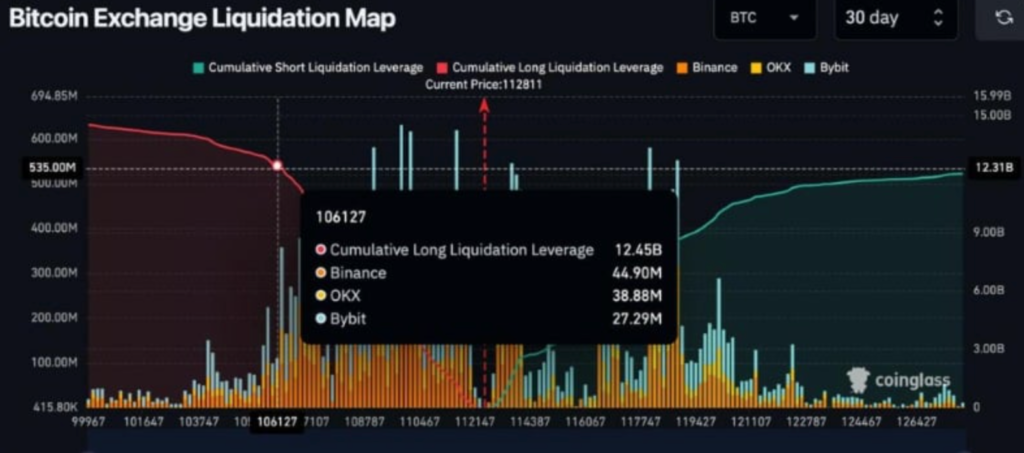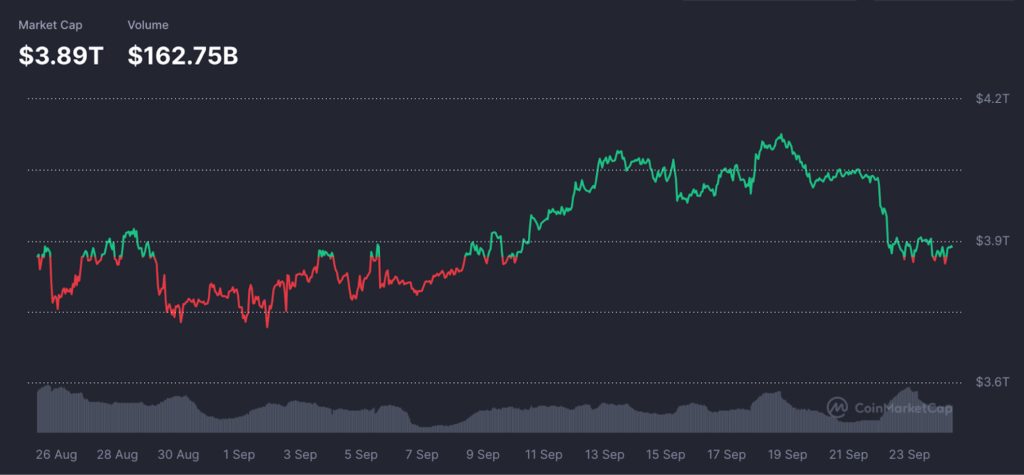Yes, according to analysts, while Bitcoin price in 2025 faces immediate risks from $12.5 billion in potential liquidations, the push to open $9.3 trillion in 401 (k) retirement assets to crypto provides a powerful long-term adoption driver. The short-term outlook is volatile and could see sharp corrections, but the structural forces of retirement flows, institutional accumulation, and supportive macro trends suggest Bitcoin is positioned to overcome liquidation fears and potentially move toward higher price targets, including $200,000.
Key Takeaways
• $12.5 billion in leveraged Bitcoin positions could trigger cascading liquidations if the price falls just 5%.
• A US Executive Order and congressional pressure could soon allow $9.3 trillion in 401 (k) assets to access crypto.
• Even a 1% allocation from 401 (k) accounts would represent a potential $122 billion in inflows, a scale that could push Bitcoin toward $200,000.
• Institutions like MicroStrategy, Metaplanet, and Strive are accumulating Bitcoin during periods of market weakness.
• The Federal Reserve’s September 2025 rate cut, despite 2.9% inflation, supports Bitcoin and gold as hedges against monetary instability.
$12.5B in Bitcoin liquidation risk hangs over the market
Data from CoinGlass highlights that $12.5 billion worth of leveraged positions are at risk across major exchanges.

Source: Coinglass
About $4.8 billion on Binance, $2.7 billion on Bybit, and more on OKX are at risk, with a 5% Bitcoin drop near $112,000 potentially triggering cascading liquidations. Forced selling from unmet margin calls amplifies downward pressure, a pattern seen before in May 2021 when Bitcoin plunged 12% and erased $10 billion in leveraged positions. Research shows leverage can magnify volatility by 30–40%, leaving the market structurally fragile in the near term.
401(k) crypto adoption could dwarf short-term risks
Short-term risks from liquidations contrast with a major long-term shift: President Trump’s August 2025 Executive Order opened the door for crypto in 401(k) plans, with lawmakers pressing the SEC for rapid implementation. With $9.3 trillion in U.S. 401(k) assets versus a $3.89 trillion global crypto market cap, even a 1% allocation would mean $122 billion in inflows. Such scale could propel Bitcoin past $200,000, analysts suggest.

Source: CoinMarketCap
Allowing 401(k) plans direct access to Bitcoin marks a structural shift, moving beyond ETFs and equity proxies like Coinbase, and embedding crypto into mainstream retirement savings for the first time.
Institutions continue to buy the dip
Institutions are steadily accumulating Bitcoin as a long-term strategy, not short-term trades. MicroStrategy, Metaplanet, and Strive have collectively added billions in BTC to their balance sheets, signaling confidence in Bitcoin as a corporate reserve asset. Rather than fearing market weakness, they view liquidation-driven dips as prime buying opportunities.
Bitcoin market impact and price scenarios
Short-term risks: Bitcoin could face sudden drawdowns if liquidation thresholds are breached. A 5–10% drop could trigger multi-billion-dollar forced selling, echoing past crashes. Near-term volatility remains high.
Medium-term drivers: Institutional accumulation and rising retirement account balances suggest growing demand. As of 30 June, 401(k) millionaires reached 595,000, up 16% from Q1, according to Fidelity.
Long-term outlook: If retirement flows materialise, analysts believe Bitcoin could move toward $200,000. Even if only a fraction of the $9.3 trillion 401(k) pool enters the market, the effect would outweigh liquidation shocks.
Overall, the balance of risks suggests caution for traders in the short run, but optimism for investors who can withstand volatility and focus on the structural forces of adoption.
Disclaimer: The performance figures quoted refer to the past, and past performance is not a guarantee of future performance or a reliable guide to future performance.The future performance figures quoted are only estimates and may not be a reliable indicator of future performance.


Leave a Reply